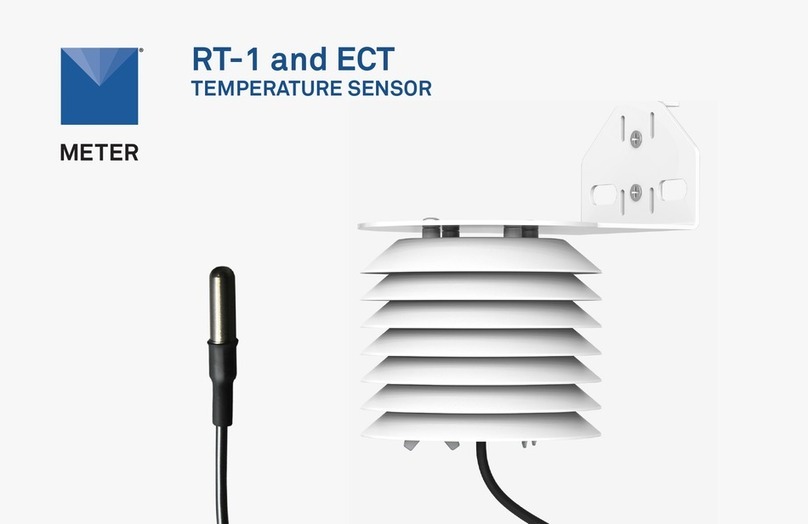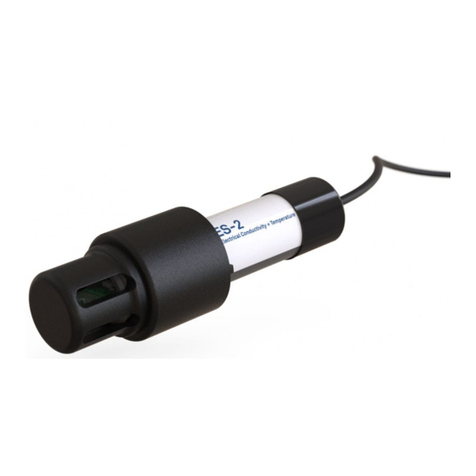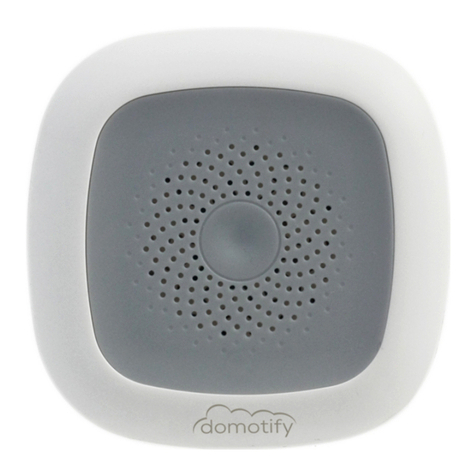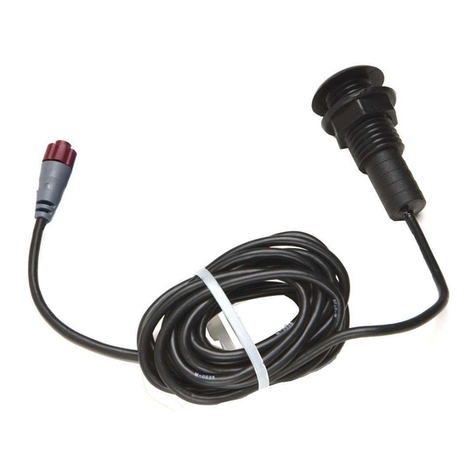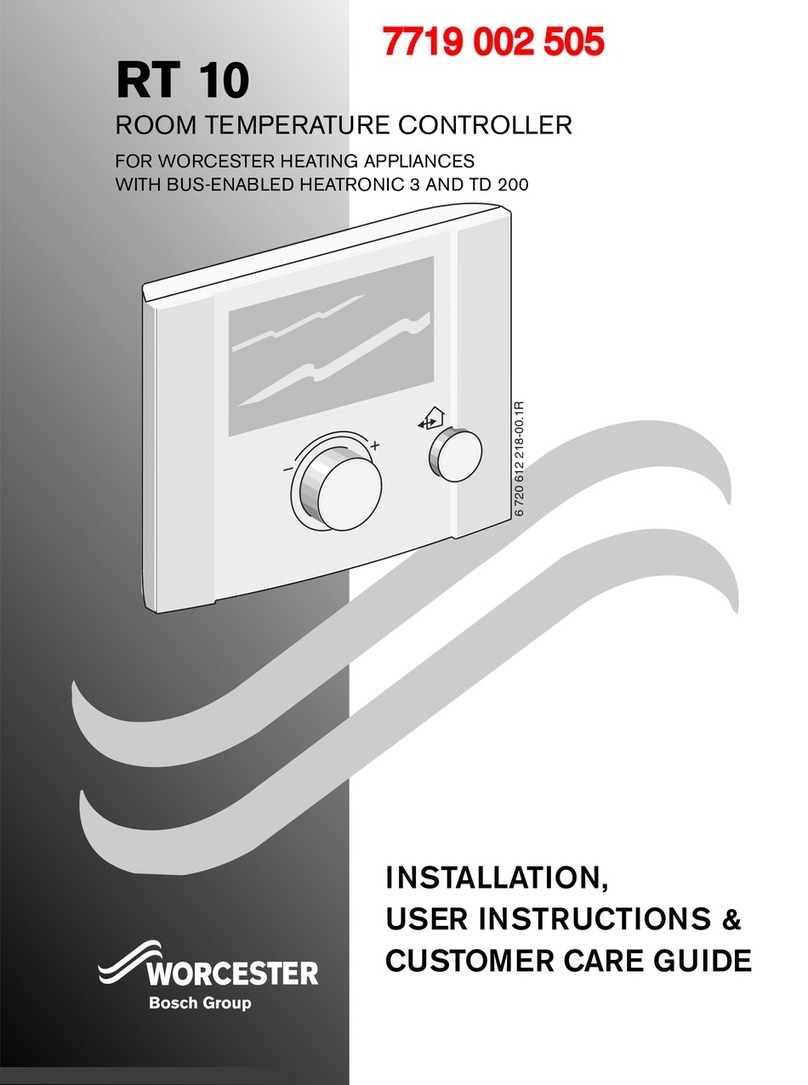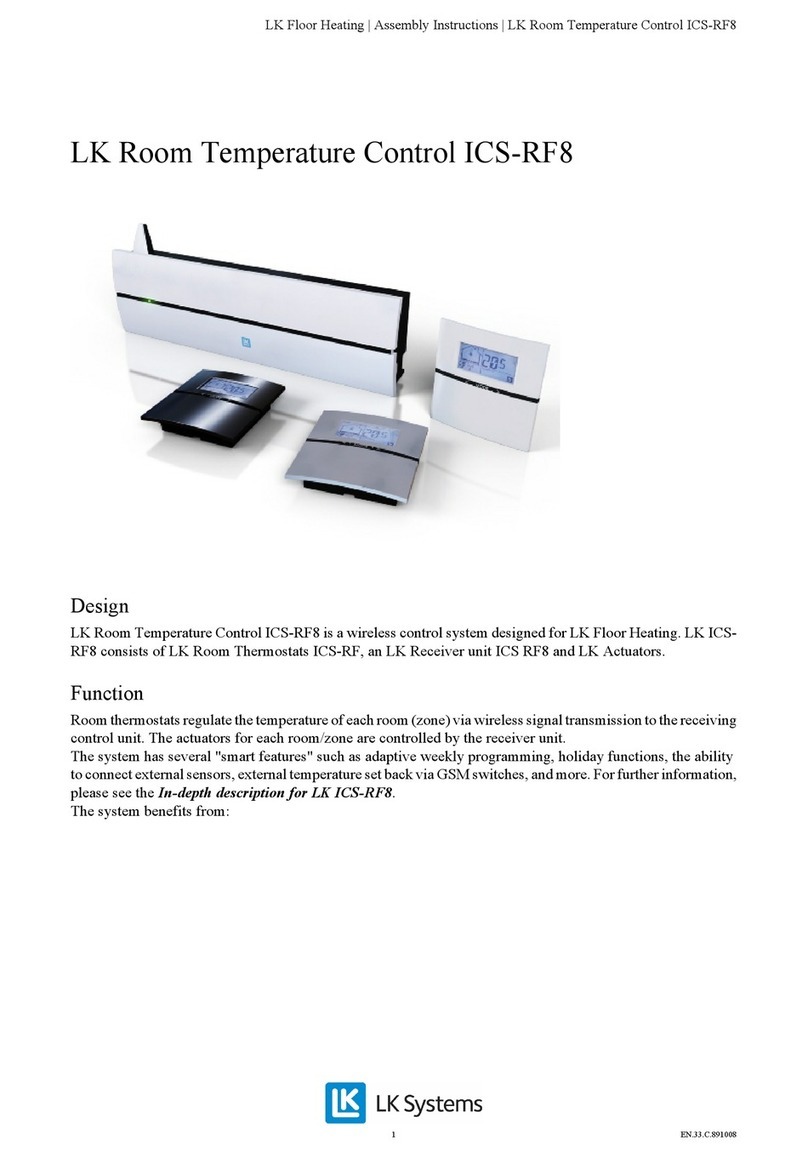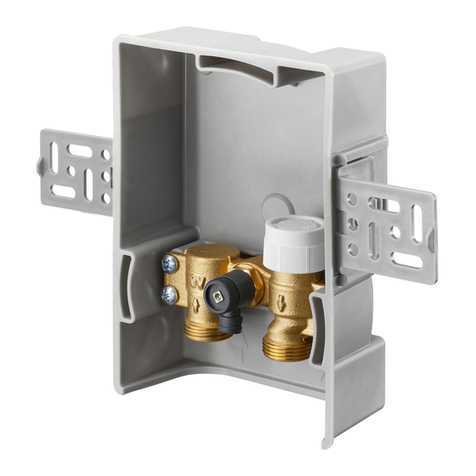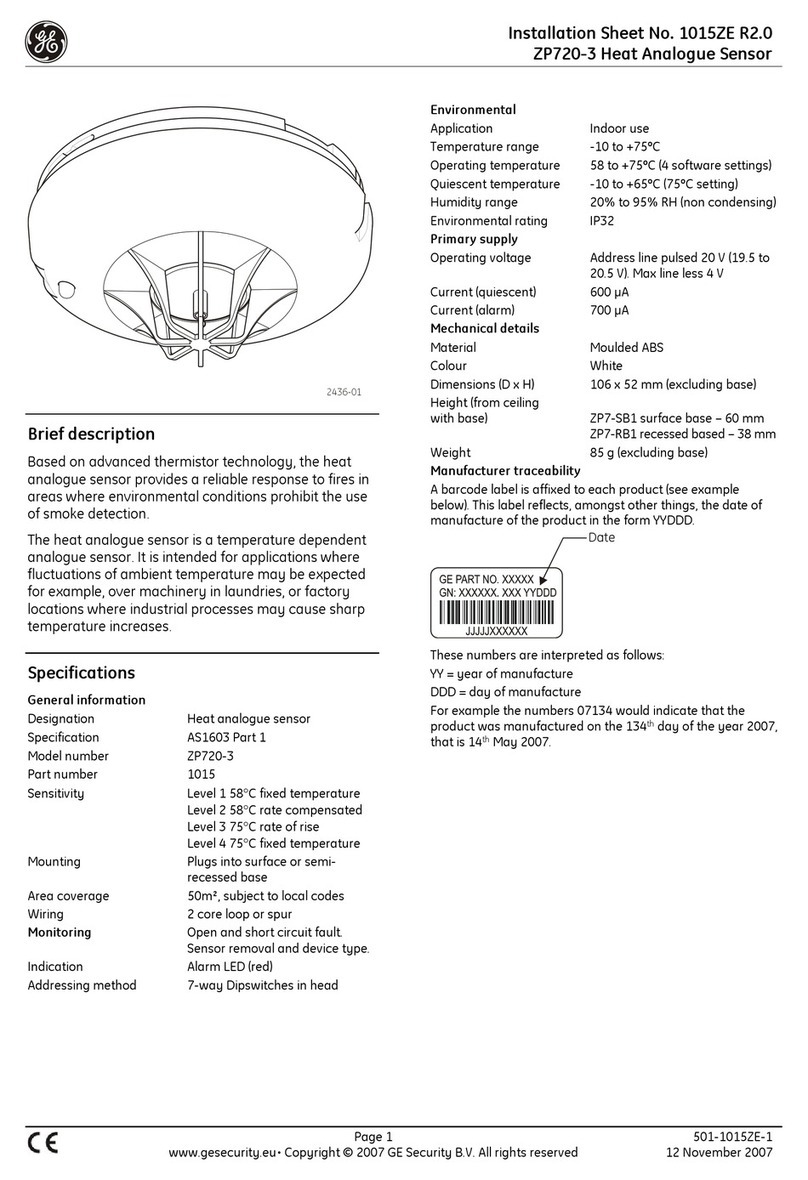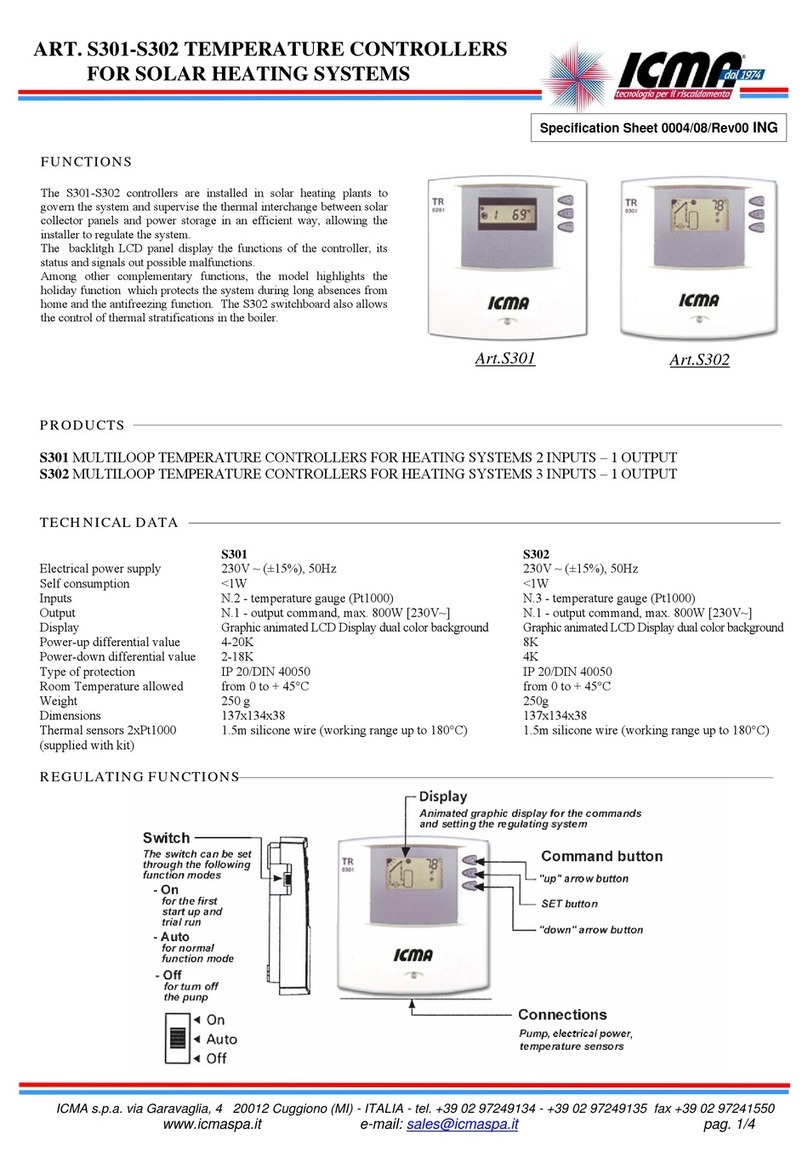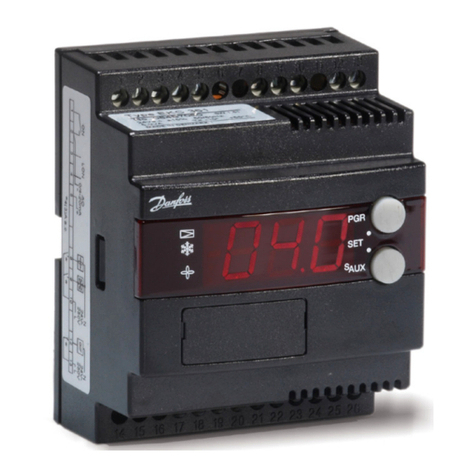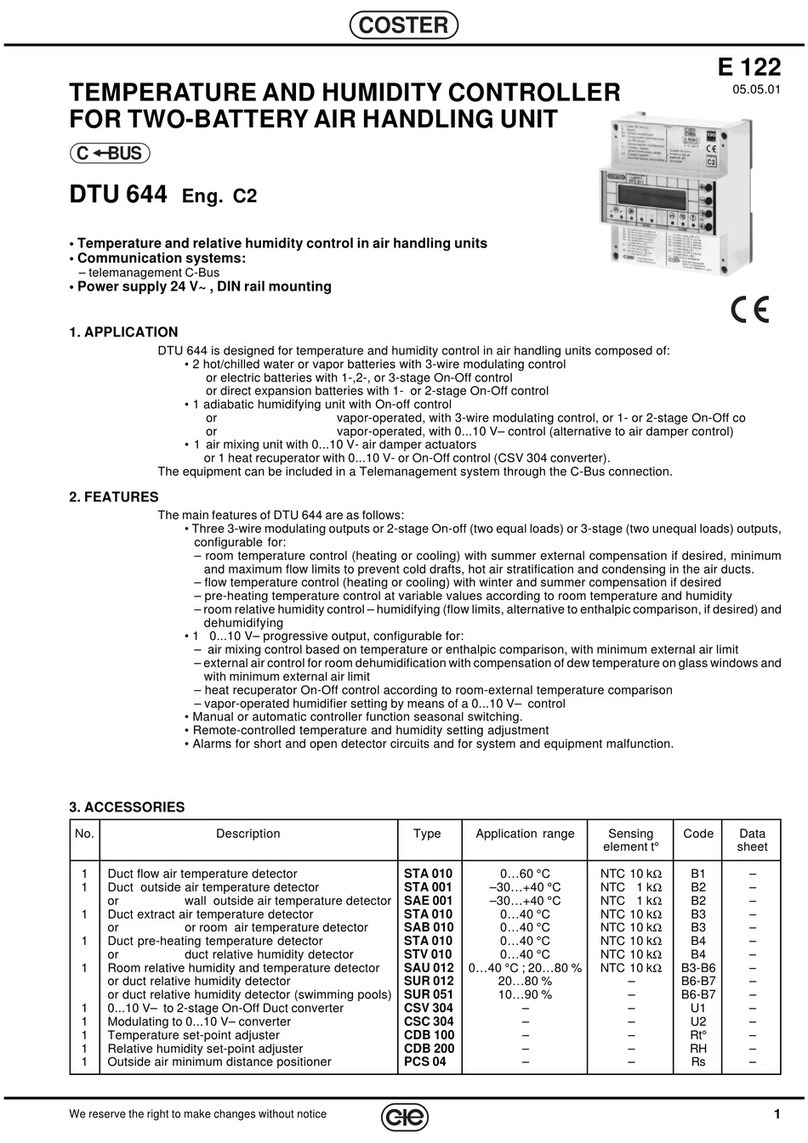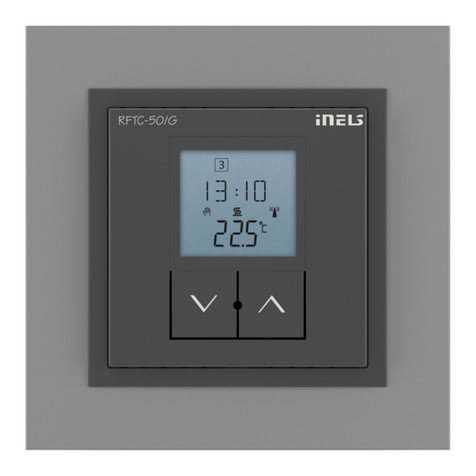METER TEROS 06 User manual

i
TABLE OF CONTENTS
1. Introduction.............................................................................................. 1
2. Operation ...................................................................................................2
2.1 Installation ................................................................................................2
2.2 Drilling With the TEROS06 Auger............................................................... 4
2.3 Connecting................................................................................................. 4
2.3.1 Connect to METER Data Logger........................................................5
2.3.2 Connect to a Non-METER Data Logger .............................................6
2.4 Communication .........................................................................................8
2.5 Removing the Sensor .................................................................................9
3. System....................................................................................................... 10
3.1 Specifications.......................................................................................... 10
3.2 Components ............................................................................................ 13
4. Service....................................................................................................... 14
4.1 Calibration ............................................................................................... 14
4.2 Maintenance............................................................................................ 14
4.3 Troubleshooting ....................................................................................... 14
4.4 Customer Support.................................................................................... 15
4.5 Terms and Conditions .............................................................................. 15
Index ................................................................................................................. 16
18408-00
8.31.2020


1
1. INTRODUCTION
Thank you for choosing the TEROS 06 temperature profile probe from METER Group.
TEROS 06 measures soil temperature at specified depths following World Meteorological
Organization (WMO) recommendations.
TEROS 06 is designed for measurements in the field, in lysimeters, and in water bodies. The
small diameter of 20 mm minimizes soil disturbance and the fiberglass reinforced plastic
body causes no temperature carryover between profile layers.

2
OPERATION
2. OPERATION
Please read all instructions in this section before operating the TEROS06 to ensure it
performs to its full potential.
PRECAUTIONS
METER sensors are built to the highest standards, but misuse, improper protection,
or improper installation may damage the sensor and possibly void the manufacturer’s
warranty. Before integrating TEROS06 into a system, make sure to follow the recommended
installation instructions and have the proper protections in place to safeguard sensors from
damage. If installing sensors in a lightning-prone area with a grounded data logger, see the
application note Lightning surge and grounding practices.
2.1 INSTALLATION
When selecting a site for installation, remember the soil adjacent to the sensor surface has
the strongest influence on the sensor reading.
Follow the steps listed in Table 1 to set up the TEROS06 and start collecting data.
Table 1 Installation
Tools Needed
TEROS 06 auger
Dead blow hammer
PVC casing or flexible conduit (to protect cables)
Cable inserting tool (if using long flexible conduits)
Spade (to dig a slot for the cable)
Level (to check that auger is level as it is digging the hole for sensor)
Preparation
Conduct System Check
Plug the sensor into the logger (Section2.3) to make sure the sensor
isfunctional.
Installation
Create Hole
Avoid interfering objects, such as roots or rocks.
Mark the required drilling depth (104 cm) on the TEROS 06 auger.
Drill a hole stepwise until the marker reaches the soil surface (Section2.3).
Avoid soil compaction by drilling with several steps (maximum drilling step
length = 30 cm).
ATTENTION: Minimize air gaps and soil compaction around the sensor. Air gaps around
the sensor will result in slow readings of soil temperature.
Dig a narrow trench 15 cm deep with a spade from the TEROS06 installation
location to the data logger site to bury the sensor cable.

3
TEROS 06
Table 1 Installation (continued)
Installation
(continued)
NOTE: Burying the sensor cable will prevent thermal heat flux through the sensor cable
into the TEROS06.Otherwise solar radiation may heat up the cable and may affect
reported temperature values.
Insert Sensor
Gently insert the probe into the borehole until the shaft end is flush with the
soil surface.
If the borehole is too tight, remove the sensor and insert the auger. Rotate the
auger one or two revolutions to expand the borehole a bit.
DO NOT use a hammer to drive in the sensor!
Secure and Protect Cables
NOTE: Improperly protected cables can lead to severed cables or disconnected sensors.
Cabling issues can be caused by many factors such as rodent damage, driving over sensor
cables, tripping over cables, not leaving enough cable slack during installation, or poor
sensor wiring connections.
Install cables in conduit or plastic cladding when near the ground to avoid
rodent damage.
Lay the cables in the trench.
Gather and secure cables between the TEROS06 and the data logger to the
mounting mast in one or more places.
Port1Port2Port3Port 4 Port5Port6
TEST
OK
ERROR
(-)
(-) (-) (-)
(-)(+)(-)(+)(+)
(+)(+)(+)
Connect to Logger
Plug the sensor into a data logger.
Use the data logger to make sure the sensor is reading properly.
Verify that these readings are within expected ranges.
For more specific instructions on connecting to data loggers, refer to
Section2.3.
NOTE: Electrical installations must comply with the safety and EMC requirements of the
country in which the system is to be used.
Backfill the Soil
Return soil to the hole and trench in the order it was removed. Pack the soil
back to its native bulk density.

4
OPERATION
2.2 DRILLING WITH THE TEROS06 AUGER
METER recommends using only the specially designed TEROS06 auger (Figure1) for
installing the TEROS06. The auger creates a tight borehole for the sensor to maintain good
thermal contact with the soil.
Figure1 TEROS06 auger
The following steps detail how to use the TEROS06 auger:
1. Assemble the auger using the handle and auger head.
2. Mark the sensor length (104 cm) on the auger head.
3. Place the auger tip on the ground and adjust to vertical using a level.
4. Hit the handle gently a few times with a dead blow hammer until the auger head is 30 cm
in the ground.
Continue to check the level for a proper upright angle until the auger is in far enough that
the angle does not change.
5. Rotate the auger one revolution clockwise to cut off the soil in the borehole.
6. Pull the auger out of the borehole after every 30-cm increment to avoid soil compaction.
7. Remove the soil inside the auger head.
8. Repeat step4 through step7 until desired depth is reached.
2.3 CONNECTING
The TEROS06 works seamlessly with METER data loggers. The TEROS06 can also be used with
other data loggers, such as those from Campbell Scientific, Inc. For extensive directions on
how to integrate the sensors into third-party loggers, refer to the TEROS06 Integrator Guide.

5
TEROS 06
TEROS06 sensors require an excitation voltage in the range of 3.9 to 28.0 VDC and operate
at a 3.3-VDC level for data communication. TEROS06 can be integrated using DDI serial,
SDI-12 protocol, Modbus RTU protocol, or tensioLINK protocol. See the TEROS06 Integrator
Guide for details on interfacing with data acquisition systems.
TEROS06 sensors come with either a 3.5-mm stereo plug connector (Figure2)
to facilitate easy connection with METER loggers or with a 4-pin M12 connector
(Figure3) to facilitate connecting to some third-party loggers (Section2.3.2).
The TEROS06 comes standard with a 4.5-m cable. In some instances, the cable can be
extended beyond 75 m by the user, but this is discouraged for a variety of reasons. Please
contact Customer Support for more details before extending or splicing cables.
Ground
Digital communication
Power
Figure2 3.5-mm stereo plug connector wiring used with METER loggers
11
22
33
44
Male plug on
sensor cable
Female plug on
connecting cable
Figure3 4-pin M12 plug connector used with non-METER loggers
2.3.1 CONNECT TO METER DATA LOGGER
The TEROS 06 works most efficiently with METER ZENTRA series data loggers. Check the
METER download webpage (metergroup.com/downloads) for the most recent data logger
firmware. Logger configuration may be done using either ZENTRA Utility (desktop and mobile
application) or ZENTRA Cloud (web-based application for cell-enabled data loggers).
METER recommends using a standard stereo plug connector with a METER ZENTRA series
data logger using SDI-12 communications protocol.
1. Plug the 3.5-mm stereo plug connector into one of the sensor ports on the logger.
2. Use the appropriate software application to configure the chosen logger port for the
TEROS06. METER data loggers will automatically recognize TEROS06 sensors.
3. Set the measurement interval.
METER data loggers measure the TEROS06 every minute and return the average of the
1-min data across the chosen measurement interval.

6
OPERATION
TEROS06 data can be downloaded from METER data loggers using either ZENTRA Utility or
ZENTRA Cloud. Refer to the logger user manual for more information about these programs.
2.3.2 CONNECT TO A NONMETER DATA LOGGER
The TEROS06 can be used with non-METER (third party) data loggers. Refer to the third-
party logger manual for details on logger communications, power supply, and ground ports.
The TEROS06 Integrator Guide also provides detailed instructions on connecting sensors to
non-METER loggers.
METER recommends using a 4-pin M12 plug connector and a connection cable with open
wires for use with a non-METER data logger using either SDI-12, tensioLINK serial, or
Modbus RTU communications protocol.
If the TEROS06 cable being used with a non-METER data logger has a standard stereo plug
connector and needs to be connected to a non-METER data logger, use one of the following
two options.
Option 1
1. Clip off the stereo plug connector on the sensor cable.
2. Strip and tin the wires.
3. Wire it directly into the data logger.
This option has the advantage of creating a direct connection with no chance of the sensor
becoming unplugged. However, it then cannot be easily used in the future with a METER
readout unit or data logger.
Option 2
Obtain an adapter cable from METER.
The adapter cable has a connector for the stereo plug connector on one end and three wires
(or pigtail adapter) for connection to a data logger on the other end. The stripped and tinned
adapter cable wires have the same termination as in Figure4: the brown wire is excitation,
the orange is output, and the bare wire is ground.
NOTE: Secure the stereo plug connector to the pigtail adapter connections using adhesive-lined heat shrink to ensure
the sensor does not become disconnected during use.
Connect the TEROS 06 wires to the data logger as illustrated in Figure4 and Figure5, with
the power supply wire (brown) connected to the excitation, the out wire (orange) to a digital
input, and the bare ground wire to ground. Refer to the third-party logger manual for details
on wiring.Secure the stereo plug connector to the pigtail adapter connections to ensure the
sensor does not become disconnected during use.

7
TEROS 06
Ground (bare)
Digital
communication (orange)
Power (brown)
Figure4 Pigtail wiring
Excitation Digital
in
Data Logger
Ground
Digital
communication
(orange)
Ground
(bare)
Power
(brown)
Figure5 Wiring diagram
NOTE: The acceptable range of excitation voltages is from 3.9 to 28.0 VDC.To read the TEROS06 with Campbell
Scientific data loggers,power the sensors off a 12-V port or switched 12-V port.
If the TEROS06 has the M12 plug connecting cables, connect the TEROS06 wires to the data
logger as illustrated in Figure6 and either Figure7 or Figure8, depending on the desired
protocol. Connect the screen (thick black wire) to grounding.
brown PIN 1 Power +
white PIN 2 RS485-A/SDI12
blue PIN 3 Ground
black PIN 4 RS485-B
screen (thick black)
11
22
33
44
Male plug on
sensor cable
Female plug on
connecting cable
Figure6 4-pin M12 plug wiring
Excitation Digital in
SDI-12
Data Logger
Ground
Digital
communication
(white)
Ground
(blue)
Data outup
(black)
Power
(brown)
Figure7 Wiring diagram for M12 plug and SDI-12 communication

8
OPERATION
Excitation Digital in
RS-485 A (+)
Data Logger
Ground
Digital
communication
(white)
Ground
(blue)
Power
(brown)
Digital in
RS-485 B (–)
Digital
communication
(black)
Figure8 Wiring diagram for M12 plug and RS-485 communication
2.4 COMMUNICATION
The TEROS06 sensor communicates using different methods:
• DDI serial communications protocol
• SDI-12 communications protocol
• RS-485 tensioLINK communications protocol (M12 plug only)
• RS-485 Modbus RTU communications protocol (M12 plug only)
To obtain detailed instructions for using these protocols, read the TEROS06 Integrator Guide.
The SDI-12 protocol requires that all sensors have a unique address. If the TEROS06 is being
used with a non-METER logger using SDI-12 protocol on a bus, use the METER ZSC and the
METER ZENTRA Utility Mobile app to change the sensor SDI-12 address. See the individual
sensor integrator guide for more information about the SDI-12 protocol in the sensors.
NOTE: The sensor SDI-12 address must be returned to 0 to work with ZENTRA loggers.
1. Using a mobile device, open the ZENTRA Utility Mobile app.
2. Connect the sensor to the ZSC.
3. Under Sensor Information, select the SDI Address dropdown.
4. Scroll through the options and select the desired SDI-12 address.
NOTE: Address options include 0-9, A-Z, and a-z.
Detailed information can also be found in the application note Setting SDI-12 addresses
on METER digital sensors using Campbell Scientific data loggers and LoggerNet
(metergroup.com/address-csi-loggers).
When using the sensor as part of an SDI-12 bus, excite the sensors continuously to avoid
issues with initial sensor startup interfering with the SDI-12 communications.

9
TEROS 06
2.5 REMOVING THE SENSOR
To remove the sensor from the soil, pull gently on the sensor shaft until the sensor is out of
the soil.
WARNING: Do not pull by the cable! Doing so may break internal connections and make the sensor unusable.

10
SYSTEM
3. SYSTEM
This section describes the specifications, components, and theory of the TEROS06.
3.1 SPECIFICATIONS
MEASUREMENT SPECIFICATIONS
Temperature
Range –20 to +50 °C
Resolution ±0.03 °C
Accuracy ±0.1 °C (0 to 30 °C)
±0.2 °C (–20 to 50 °C)
Measurement Depths
5 cm, 10 cm, 20 cm, 30 cm, 50 cm, 100 cm
COMMUNICATION SPECIFICATIONS
Output
SDI-12 one-wire serial interface
• DDI serial communications protocol
• SDI-12 communications protocol
RS-485 two-wire serial interface (M12 connector only)
• tensioLINK serial communications protocol
• Modbus RTU communications protocol
Data Logger Compatibility
METER ZL6 data loggers and any data acquisition system capable of 3.9- to 28.0-VDC
power and serial interface with SDI-12 and/or RS-485 interface, Modbus RTU, or
tensioLINK communication
PHYSICAL SPECIFICATIONS
Dimensions
Length 104.0 cm (40.94 in)
Diameter 2.0 cm (0.79 in)
Operating Temperature Range
Minimum –30 °C
Maximum 60 °C

11
TEROS 06
Materials
Shaft PA66GF30
Sensor elements Stainless steel
Cable Length
4.5 m (standard)
75 m (maximum custom cable length using M12 connector and elongation cables)
Connector Types
3.5-mm stereo plug connector
4-pin M12 plug connector
NOTE: If a stripped and tinnedwire is needed, please contact Customer Support.
ELECTRICAL AND TIMING CHARACTERISTICS
Supply Voltage (VCC to GND)
Minimum 3.9 VDC continuous
Typical
Maximum 28.0 VDC continuous
Digital Input Voltage (Logic High)
Minimum 1.9 V
Typical 3.6 V
Maximum 5.0 V
Digital Input Voltage (Logic Low)
Minimum –0.3 V
Typical 0.0 V
Maximum 1.0 V
Digital Output Voltage (Logic High)
Minimum NA
Typical 3.6 V
Maximum NA

12
SYSTEM
Power Line Slew Rate
Minimum 1.0 V/ms
Typical NA
Maximum NA
Current Drain (During Measurement)
Minimum 2.0 mA
Typical 2.5 mA
Maximum 4.0 mA
Current Drain (While Asleep)
Minimum NA
Typical 80.0 mA
Maximum NA
Power Up Time (DDI Serial Ready)
Minimum 210 ms
Typical NA
Maximum 400 ms
Power Up Time (SDI-12 Ready, DDI Disabled)
Minimum 210 ms
Typical NA
Maximum 400 ms
Power Up Time (RS-485 Ready, DDI Disabled)
Minimum 210 ms
Typical NA
Maximum 400 ms
Measurement Duration
Minimum 30 ms
Typical NA
Maximum 240 ms

13
TEROS 06
COMPLIANCE
Manufactured under ISO 9001:2015
EM ISO/IEC 17050:2010 (CE Mark)
3.2 COMPONENTS
The TEROS06 measures soil temperature in six defined depths of 5 cm, 10 cm, 20 cm, 30 cm,
50 cm, and 100 cm. At every measuring depth, the sensor rod is equipped with a 1-cm high
stainless steel ring, and the digital sensor is mounted at the inner surface of the stainless
steel ring. The stainless steel rings have thermal contact to the soil and they transmit the
soil temperature directly to the temperature sensor. To prevent thermal transfer through the
cable, the cable inlet is placed 14 cm below the soil surface to protect the sensor cable from
solar radiation (Figure9).
5
10
20
30
50
100
Figure9 Temperature profile probe TEROS06

14
SERVICE
4. SERVICE
This section describes the calibration, maintenance, troubleshooting guidelines, customer support
contact information, and terms and conditions.
4.1 CALIBRATION
Every TEROS06 sensor is individually calibrated in a water quench at a temperature of
10°C. No calibration is needed by the customer. The TEROS06 sensor output temperature
is in degrees Celsius unless otherwise stated in the data logger program, such as in the
preferences in ZENTRA software.
4.2 MAINTENANCE
TEROS06 may be returned to METER for maintenance in the following areas: system
inspection, recalibration, and instrument cleaning. Contact Customer Support for more
information.
4.3 TROUBLESHOOTING
Table 2 lists common problems and their solutions. If the problem is not listed or these
solutions do not solve the issue, contact Customer Support.
Table 2 Troubleshooting the TEROS06
Problem Possible Solutions
Data logger is not
recognizing sensor
If using a METER logger, update logger firmware.
Check the logger configuration for a non-METER data logger using its
user manual.
Data logger is not receiving
readings from the sensor
Check that the connections to the data logger are both correct and
secure.
Ensure that the data logger batteries are not dead or weakened.
Check the configuration of the data logger through software to
ensure TEROS06 is selected.
Ensure the software and firmware is up to date.
Sensor is not responding
Check power to the sensor.
Check the sensor cable and connector integrity.
Check that the data logger wiring is correct (Section2.3).
Cable or connector failure
If a stereo plug or M12 connector is damaged or needs to be
replaced, contact Customer Support for a replacement connector
and splice kit.
If a cable is damaged, follow the guidelines in Section2.3.2 for wire
splicing and sealing techniques.

15
TEROS 06
4.4 CUSTOMER SUPPORT
NORTH AMERICA
Customer service representatives are available for questions, problems, or feedback Monday
through Friday, 7:00 am to 5:00 pm Pacific time.
Email: support.environment@metergroup.com
sales.environment@metergroup.com
Phone: +1.509.332.5600
Fax: +1.509.332.5158
Website: metergroup.com
EUROPE
Customer service representatives are available for questions, problems, or feedback Monday
through Friday, 8:00 to 17:00 Central European time.
Email: support.europe@metergroup.com
sales.europe@metergroup.com
Phone: +49 89 12 66 52 0
Fax: +49 89 12 66 52 20
Website: metergroup.de
If contacting METER by email, please include the following information:
Name
Address
Phone
Email address
Instrument serial number
Description of the problem
NOTE: For products purchased through a distributor, please contact the distributor directly for assistance.
4.5 TERMS AND CONDITIONS
By using METER instruments and documentation, you agree to abide by the METER Group,
Inc. USA Terms and Conditions. Please refer to metergroup.com/terms-conditions fordetails.

INDEX
16
INDEX
A
accuracy 10
C
cable length 11
calibration and configuration
sensor calibration scheduler 14
compliance 13
connecting
METER data logger 5
non-METER logger 6–7
connecting the TEROS 06 4
connector types 11
customer support 15
D
data acquisition system.
See
installation, connecting the TEROS 06
E
email address 15
F
fax number 15
I
installation 2
connecting the TEROS 06 4–6
mounting 3
tools required 2
M
measurements 10–12
measurement specifications.
See
specifications, measurement
specifications
P
phone number 15
R
range 10
S
specifications 10–13
communication 10
data logger compatibility 10
measurement specifications 10
physical 10
T
terms and conditions 15
W
wiring 7–8
Other manuals for TEROS 06
1
Table of contents
Other METER Temperature Controllers manuals
Popular Temperature Controllers manuals by other brands
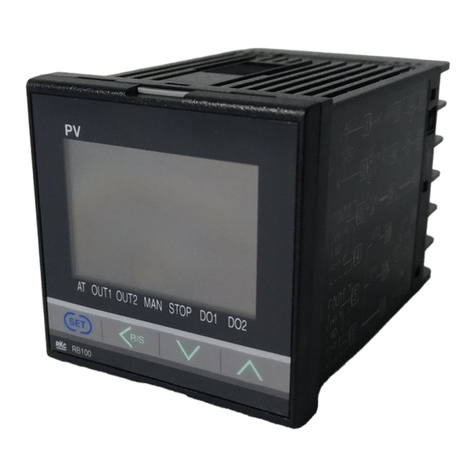
RKC INSTRUMENT
RKC INSTRUMENT RB100 Communication quick manual
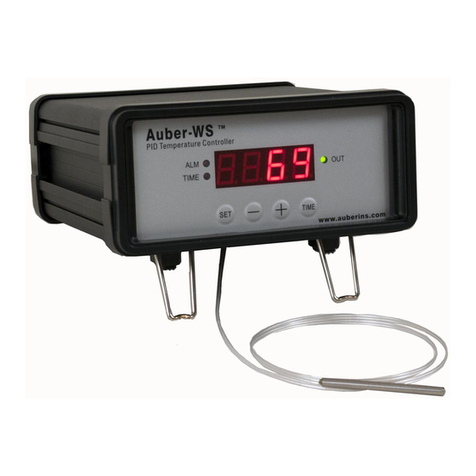
Auber Instruments
Auber Instruments WS-1211GPH quick guide
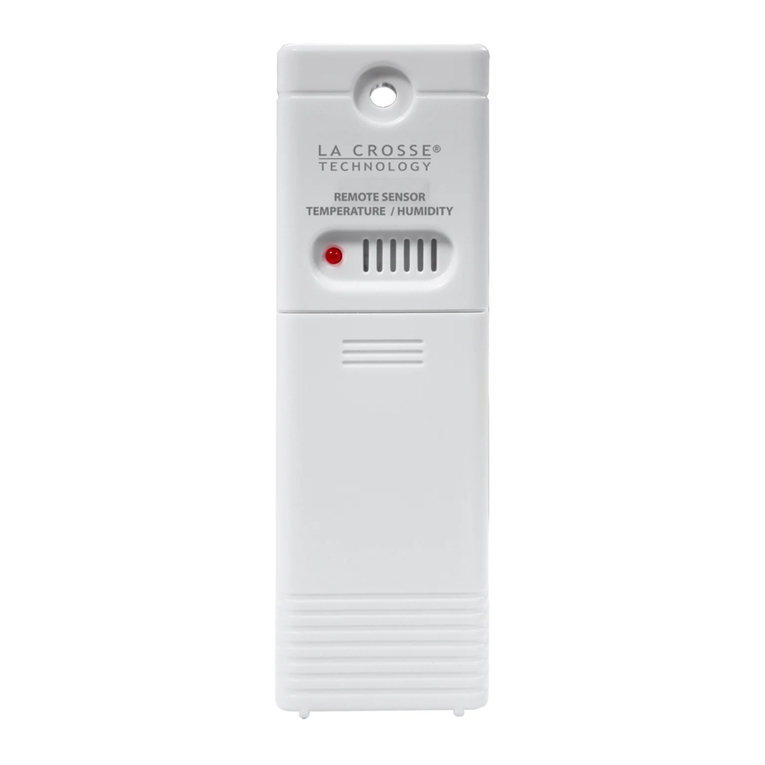
La Crosse Technology
La Crosse Technology TX141TH-Bv3 quick start guide
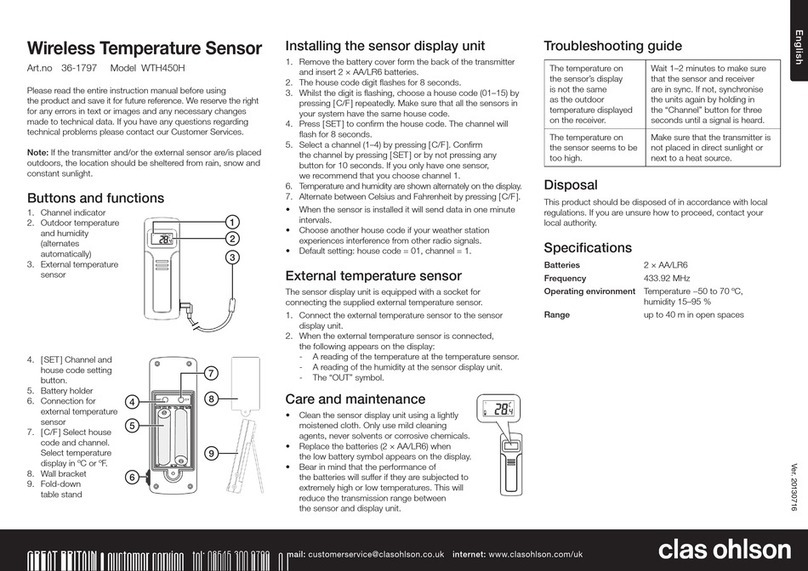
Clas Ohlson
Clas Ohlson WTH450H instruction manual
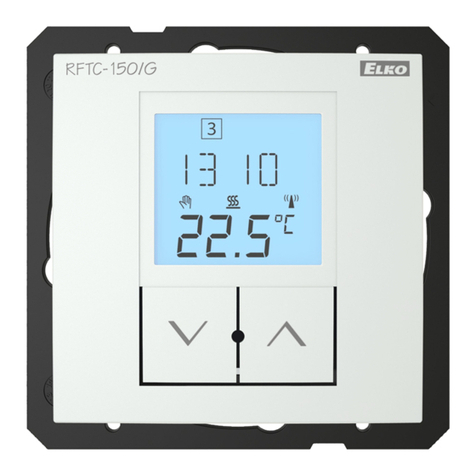
Elko
Elko iNELS RFTC-150/G manual
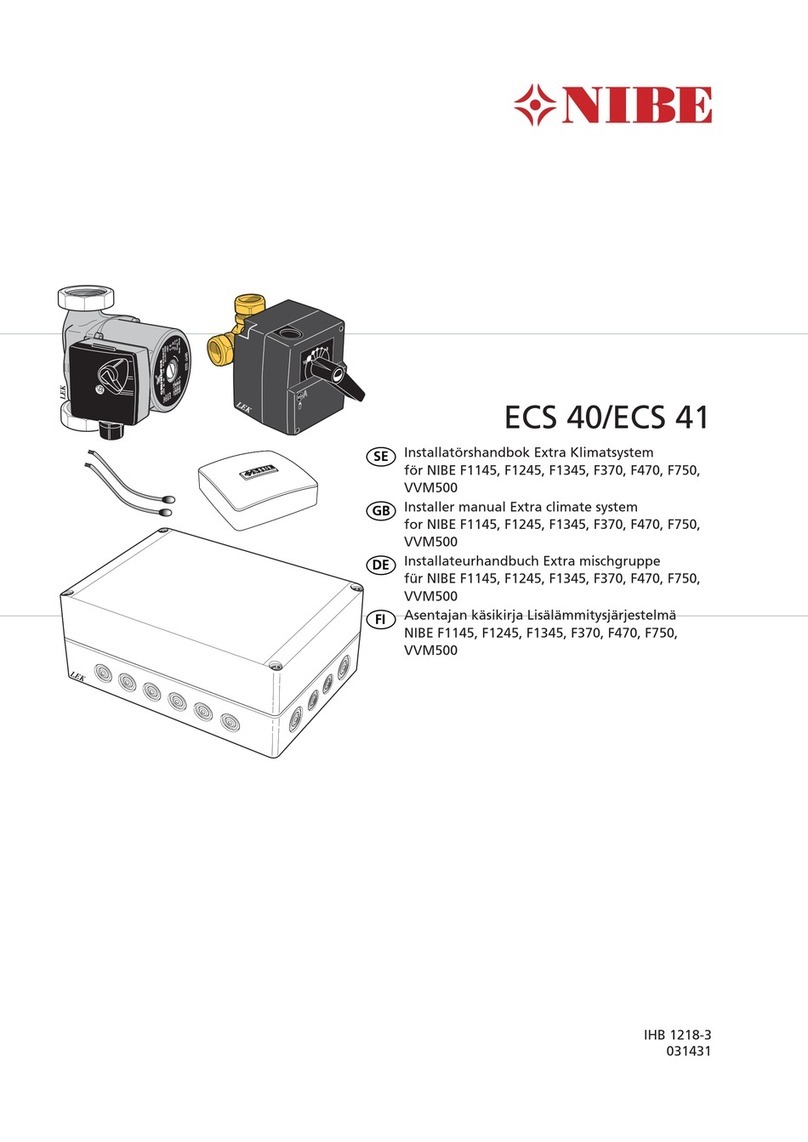
Nibe
Nibe ECS 40 Installer manual
